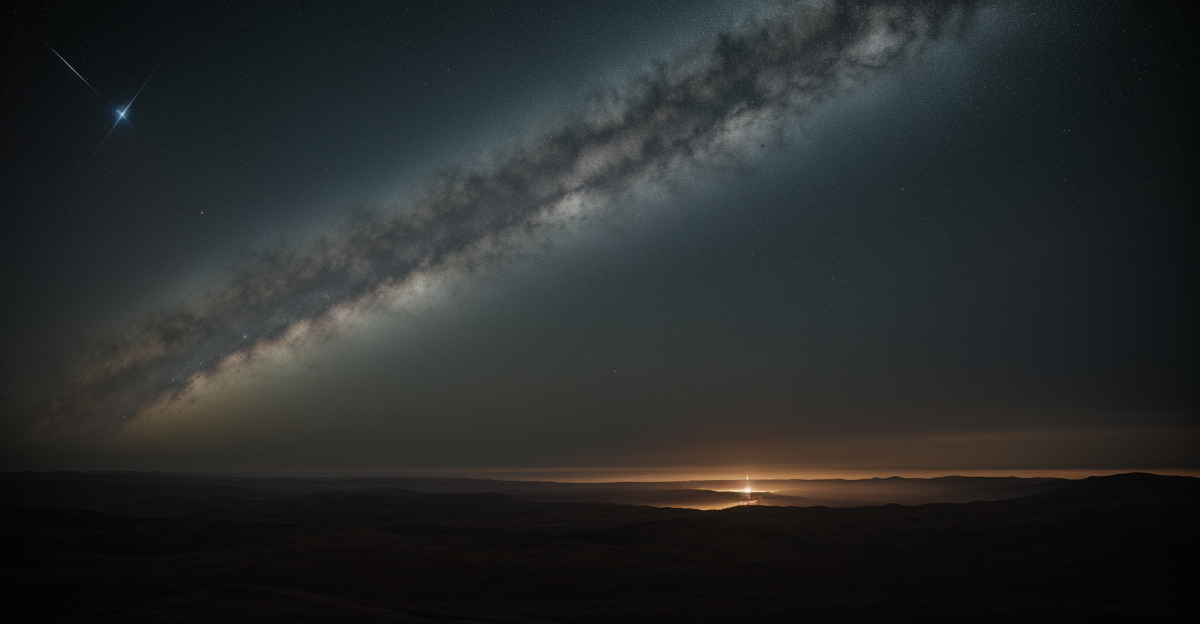
Explore the theoretical possibility of dark energy farms for interstellar travel, and the potential
Hey there, cosmic dreamers and armchair explorers! Quill here, your guide to the weird and wonderful, ready to plunge into a topic that’s both mind-boggling and, frankly, a little terrifying: Dark Energy Farms. That’s right, we’re talking about the *theoretical* – and I emphasize *theoretical*, because if this goes sideways, I’m holding you all accountable – possibility of harnessing the most mysterious force in the cosmos to fuel our interstellar ambitions. But, as with any captivating sci-fi saga, there’s a catch. A potentially universe-ending one. ### Understanding Dark Energy: The Universe’s Mysterious Accelerator So, what *is* dark energy, exactly? It’s not just dark matter’s shy, misunderstood sibling. Dark energy constitutes roughly 68% of the universe, and it’s the driving force behind its accelerating expansion. Imagine the universe as a giant loaf of raisin bread, and dark energy is causing the dough to expand, pushing the raisins (galaxies) further and further apart, faster and faster. Unlike ordinary matter, which clumps together under the influence of gravity, dark energy appears to be uniformly distributed and exerts a negative pressure, actively pushing everything away from everything else. It’s the ultimate cosmic extrovert, constantly expanding its personal space. Current explanations range from the cosmological constant (Einstein’s “biggest blunder,” which might not be so blunderous after all) to more complex ideas like quintessence (a dynamic, ever-changing energy field) and even revisions to our fundamental understanding of gravity. The key takeaway? We don’t fully grasp it, which is always a fantastic starting point for potentially catastrophic experiments. ### Dark Energy Farms: Harvesting the Void for Interstellar Propulsion Alright, we’ve got this mysterious, universe-expanding force. What if we could *capture* it? That’s where dark energy farms enter the picture. The basic concept is to construct a device capable of collecting and concentrating dark energy. Picture it as a massive cosmic battery, storing this repulsive force for later use. The most alluring application? Powering Alcubierre drives, also known as warp drives. Think Star Trek! These drives theoretically warp spacetime, creating a bubble around a spacecraft, enabling it to travel faster than light without actually *exceeding* the speed of light (because, you know, Einstein’s universal speed limit). Dark energy, with its negative pressure, could potentially provide the “exotic matter” necessary to generate and maintain this warp bubble. Imagine traversing galaxies as casually as a weekend road trip! (Assuming that road trip ends on Kepler-186f). ### The Risks: Unforeseen Consequences of Manipulating Dark Energy Now, this is where the excitement fades and the existential unease creeps in. Tampering with dark energy could have… *unpredictable repercussions*. We’re talking about potentially destabilizing the very fabric of spacetime. Imagine poking a hole in a carefully constructed sandcastle. You might start with a small imperfection, but eventually, the entire structure could crumble. One chilling possibility is that manipulating dark energy could alter fundamental constants of nature. What if the strength of gravity suddenly changed? Or the speed of light fluctuated? Or, even more unsettling, what if these constants reversed entirely? The universe as we know it would cease to exist. Another concern is that we might inadvertently accelerate or decelerate the universe’s expansion rate, leading to a premature “heat death” (everything gradually freezing to absolute zero) or some other equally unpleasant cosmic fate. It’s like playing a high-stakes game of cosmic dominoes, where the fate of reality hangs precariously in the balance. ### Ethical Considerations: A Cosmic Responsibility So, is interstellar travel worth the risk of potentially annihilating everything? That’s the ethical dilemma we’re confronted with. The moral ramifications of potentially jeopardizing the entire universe for the sake of reaching another star system are immense. This isn’t merely a scientific puzzle; it’s a profound philosophical and ethical one. We would require stringent safety measures, international collaboration, and extensive deliberation before even *contemplating* the construction of a dark energy farm. Perhaps we should begin with simulations? Or, you know, simply appreciate our own solar system for a while. ### Alternative Propulsion Methods: Are Dark Energy Farms a Necessary Risk? Fortunately, dark energy farms aren’t the only option on the table. There are other (slightly less terrifying) theoretical interstellar propulsion methods. Fusion rockets, antimatter propulsion, and beamed energy propulsion are all possibilities. Fusion rockets, while still a distant prospect, would utilize controlled nuclear fusion to generate thrust. Antimatter propulsion, even more futuristic, would involve harnessing the energy released when matter and antimatter collide. Beamed energy propulsion would employ powerful lasers or microwaves to propel a spacecraft forward. Each of these alternatives presents its own set of challenges and risks, but they might represent a safer approach than meddling with the fundamental structure of spacetime. What are YOUR thoughts on these alternative propulsion methods? Ultimately, the question boils down to this: should we prioritize caution and investigate these safer alternatives, or is the allure of the stars worth the risk of unraveling reality itself? Share your thoughts and opinions in the comments below!
Enjoyed this? Check out our YouTube channel for video versions!
Enjoyed this? Check out our YouTube channel for video versions!



